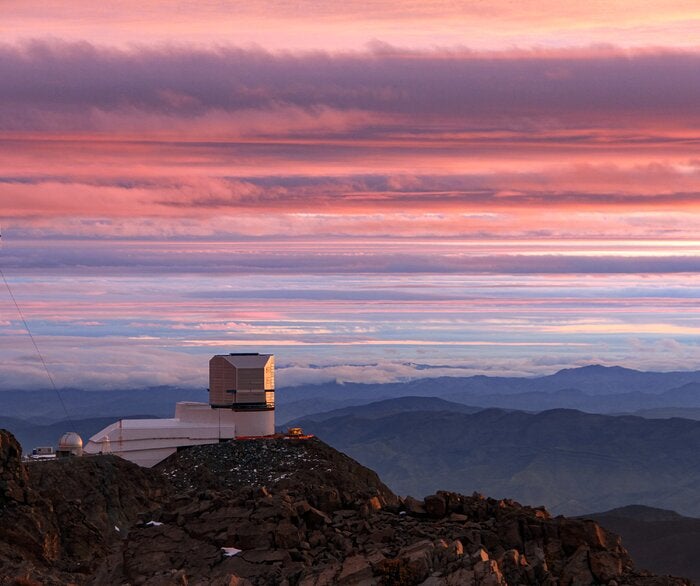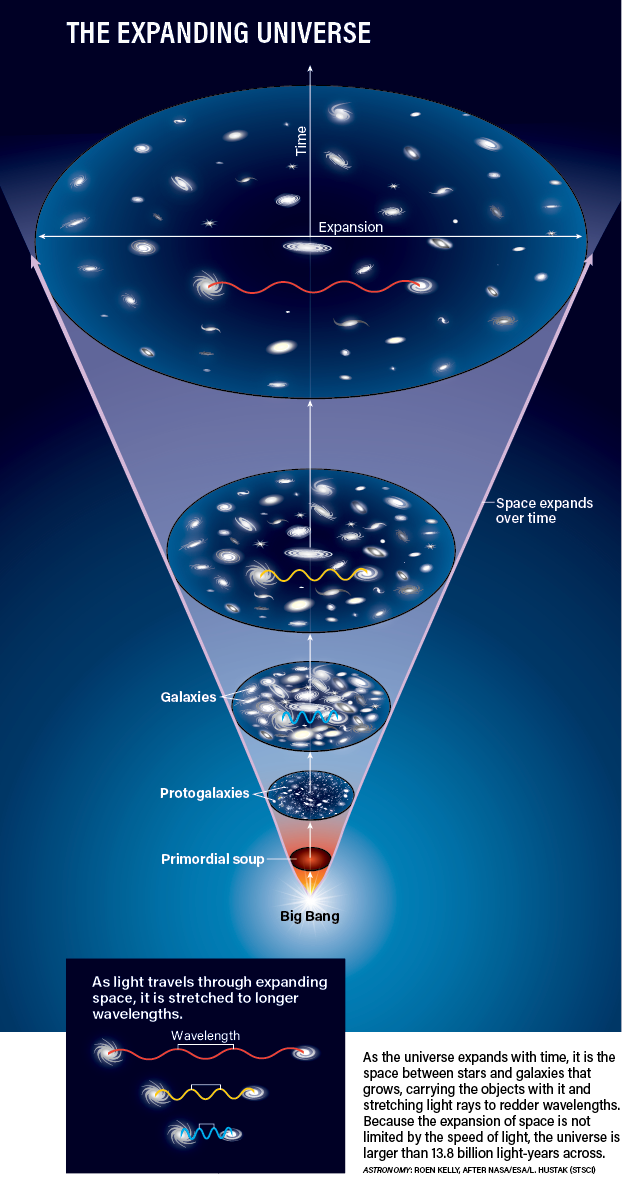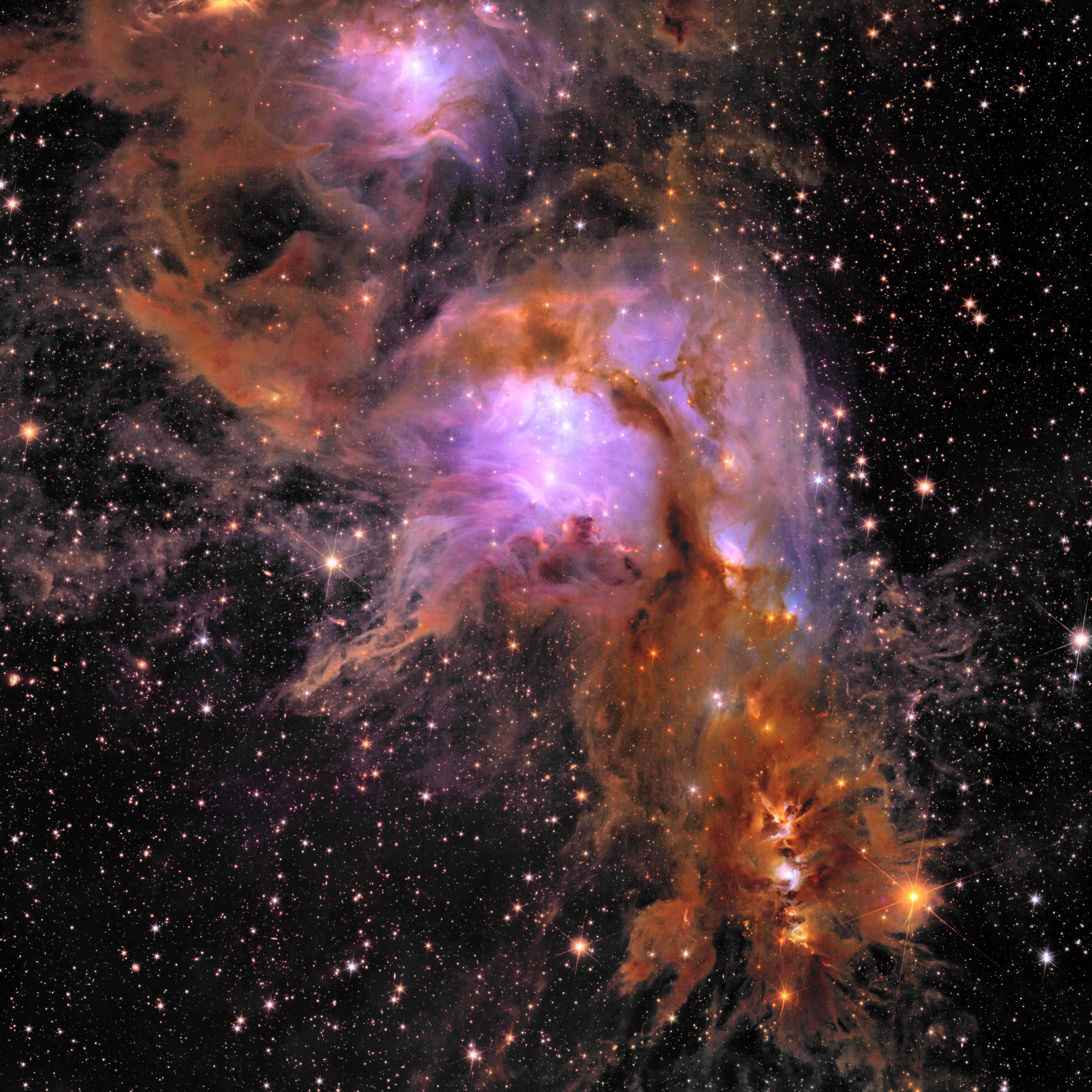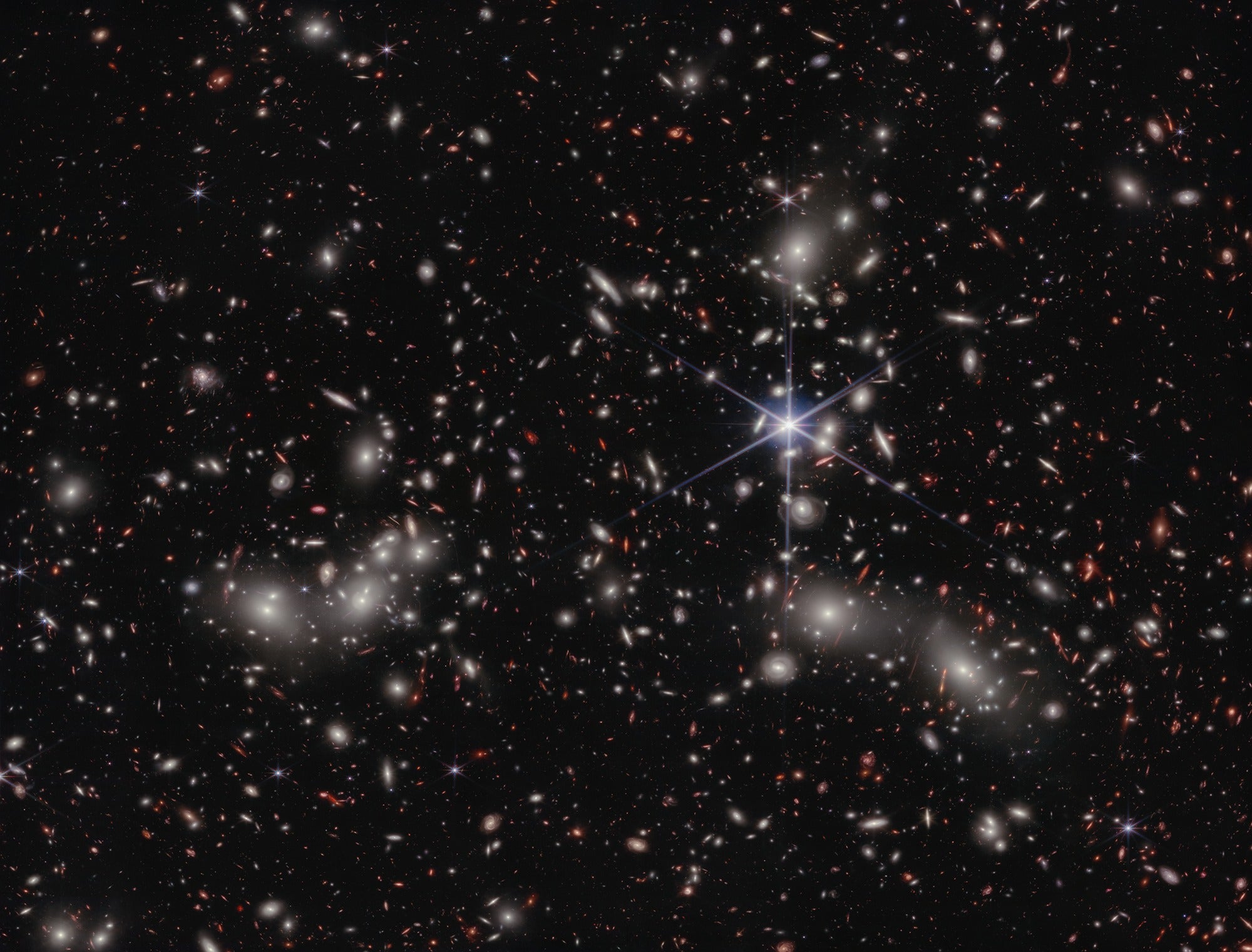October 21, 2004
A distortion of space and time predicted by Albert Einstein’s 1916 theory of general relativity has been detected directly for the first time, say scientists in Italy and the U.S. Writing in the October 21, 2004 issue of Nature, Ignazio Ciufolini (University of Lecce, Italy) and Erricos C. Pavlis (University of Maryland) report they have measured precisely a relativistic distortion known formally as the Lense-Thirring effect and more simply as “frame-dragging.”
 The GRACE team’s preliminary model of Earth’s gravity field, released in July 2003 and shown here, was at least 10 times more accurate than any previous model. On this plot, redder colors indicate higher gravity values. Click for an animated view. NASA / DLR
The GRACE team’s preliminary model of Earth’s gravity field, released in July 2003 and shown here, was at least 10 times more accurate than any previous model. On this plot, redder colors indicate higher gravity values. Click for an animated view. NASA / DLR
According to general relativity, the gravity of the spinning Earth drags the space-time framework surrounding the planet forward in the same direction that Earth rotates.
Says Pavlis, “The effect is like what happens if you put a bowling ball in a thick fluid such as molasses. As the ball spins, it drags molasses along with it — and if anything is caught in the molasses, it will move along too.” He notes that calculations indicated frame-dragging from Earth’s rotation could change a satellite’s position by about 6 feet (2 meters) over one year.
The team followed the orbital precession of the two Laser Geodynamics Satellites, LAGEOS 1 and LAGEOS 2, for almost 11 years. The satellites are covered with 426 retro-reflectors, which let geophysicists track their positions to an accuracy of a fraction of an inch (a few millimeters) at any time.
But to detect the relativistic effect, Ciufolini and Pavlis first had to subtract all other effects, such that from Earth’s lumpy gravitational field. To do this, they used new, high-precision data from NASA’s GRACE (Gravity Recovery And Climate Experiment), a geodetic satellite in orbit since 2002.
The effect the researchers measured has 99±5 percent the amount predicted by general relativity. “We’re very satisfied with the present result,” says Pavlis.
Pavlis and Ciufolini note that NASA’s Gravity Probe B satellite, launched in April 2004, should yield a frame-dragging measurement with an error under 1 percent. Gravity Probe B detects relativistic effects by monitoring the spin of four gyroscopes made of fused quartz, thus it uses a totally different type of sensor. The mission is now collecting data, and the project expects to have its first results in about a year.









